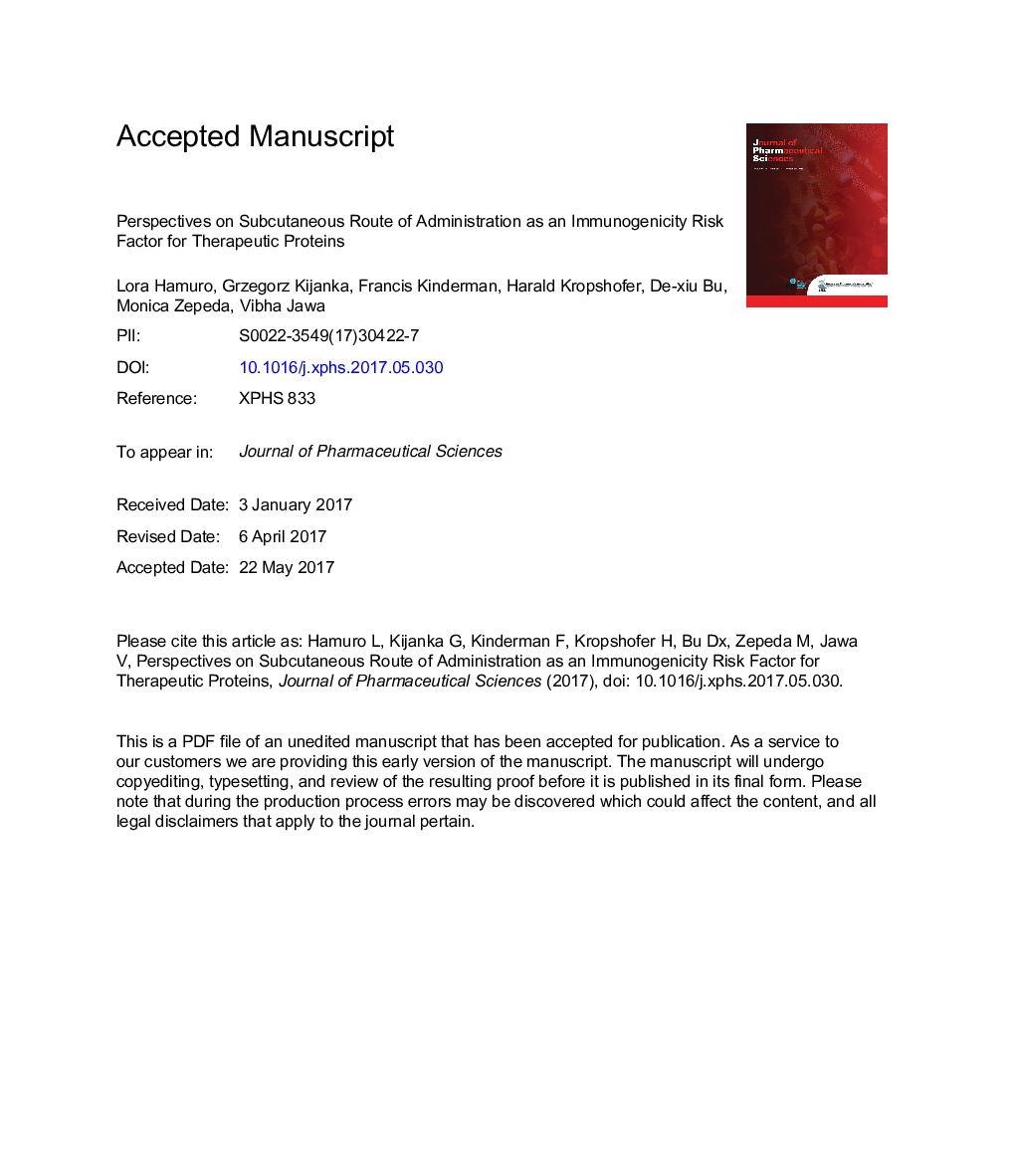| Article ID | Journal | Published Year | Pages | File Type |
|---|---|---|---|---|
| 8513756 | Journal of Pharmaceutical Sciences | 2017 | 38 Pages |
Abstract
An increasing number of therapeutic proteins are being developed for delivery through the subcutaneous (SC) route of administration. Relative to intravenous (IV) administration, the SC route offers more convenience to patients, flexibility in dosing, and potential to reduce health care costs. There is a perception that SC administration can pose a higher immunogenicity risk than IV administration for a given protein. To evaluate whether there is a difference in therapeutic protein immunogenicity associated with administration routes, a more detailed understanding of the interactions with the immune system by each route is needed. Few approved therapeutic proteins have available clinical immunogenicity data sets in the public domain that represent both IV and SC administration routes. This has prevented a direct comparison of the 2 routes of administration across a large sample size. Of the 6 marketed products where SC and IV route-related incidences of anti-drug antibody (ADA) were available, 4 were associated with higher immunogenicity incidence with SC. In other cases, there was no apparent difference between the SC and IV routes. Overall, the ADA incidence was low (<15%) with no impact on safety or efficacy. The challenges associated with identifying specific risk factors unique to SC administration are discussed.
Related Topics
Health Sciences
Pharmacology, Toxicology and Pharmaceutical Science
Drug Discovery
Authors
Lora Hamuro, Grzegorz Kijanka, Francis Kinderman, Harald Kropshofer, De-xiu Bu, Monica Zepeda, Vibha Jawa,
